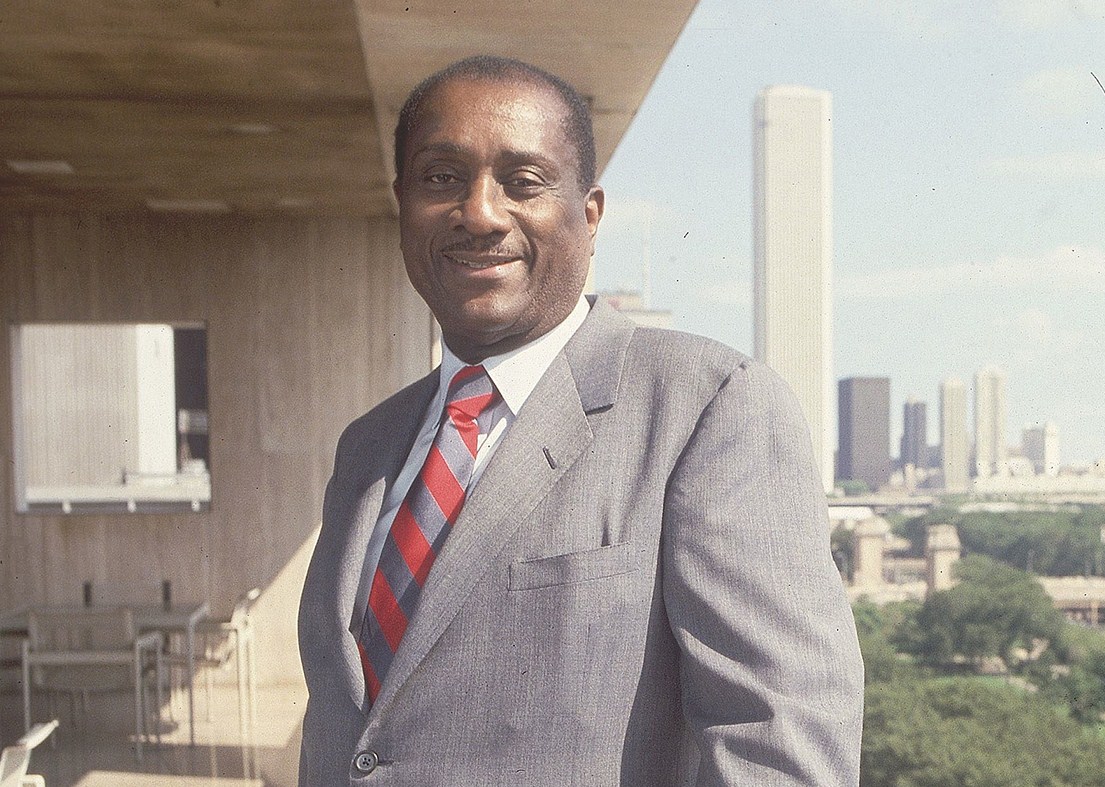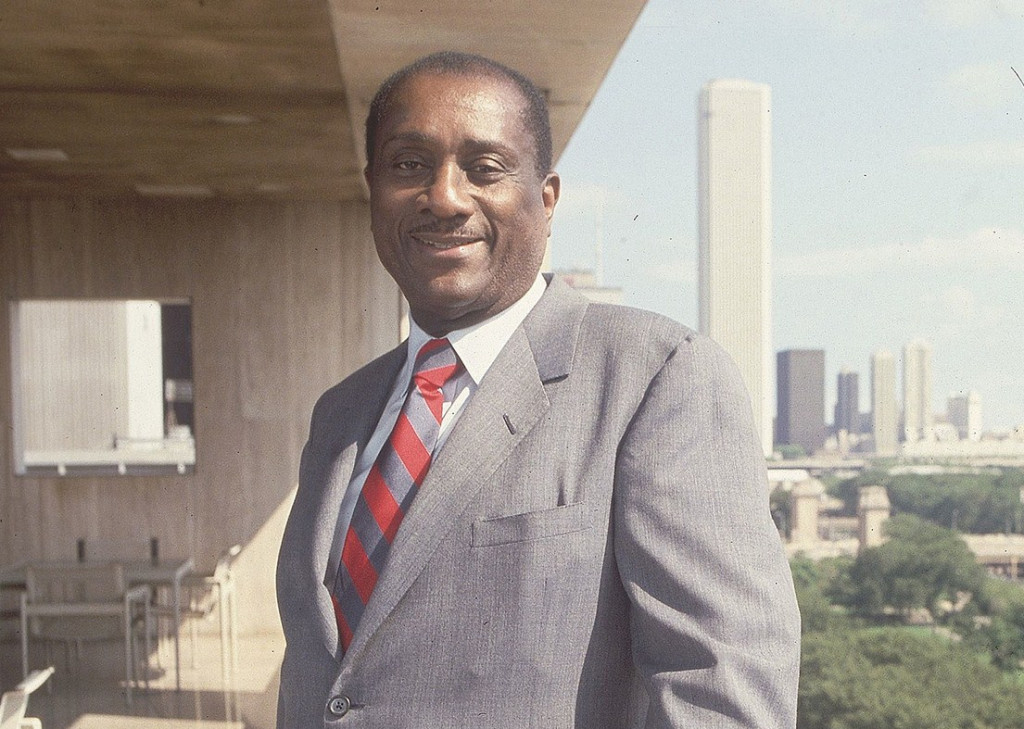Former Johnson Publishing Company tower being considered for landmark status
BY SOUMANOU SALIFOU
The recent announcement by the Chicago mayor’s office that the city’s Commission on Landmarks had begun the formal process of reviewing the tower that once served as the office of the Johnson Publishing Company, publisher of Ebony and Jet, for landmark designation is a major tribute to our history as black people at a time when the bad people who have taken over the White House to undo Obama’s legacy would rather that didn’t happen.
John H. Johnson who, in 1942, launched and succeeded against the odds to grow to unexpected success a publishing empire that uplifted black people in America and Africa, did not inspire me to start my own, humble journey, 52 years later—in 1994—to give Africa a voice in America against prejudices of all manner. Though I knew about Ebony, which I used to read back in Africa before my life’s pursuits brought me to these shores in 1983, I didn’t know Johnson’s life’s story or the amazing history of his publishing empire until I read his book, Succeeding Against the Odds, in 1995, and avidly devoured every page of Ebony‘s 50th anniversary issue. But I made it a special point to visit the tower at 820 Michigan Avenue in downtown Chicago back in 1998. Standing right there on the street for over thirty minutes, I inhaled the history of the media empire built by the pioneering businessman and publisher that had been the pride of the black community for decades, with two of its most successful publications, Ebony and Jet, a history that later shaped my own dream so similar to that of the monument that was John H. Johnson.

When, under the able leadership of Johnson Publishing Co.’s chairman, Linda Johnson Rice—who rose to the position years after the death of her father in 2005—was forced to sell a minority share to J. P. Morgan Co. in August 2011 to survive, many of us in the black community felt that like a dagger in our hearts.
One of the first to react was Dr. Boyce Watkins, founder of Your Black World Coalition. His comments, posted on the web on July 7, 2011, go: “This partnership between JP Morgan Chase and the Johnson family, quite honestly, bothers me.” Watkins laughs at the fact that the size of the deal was not disclosed, writing that it is “leading some to wonder why the owners want to keep the numbers a secret.” He adds:
“My guess is that pride is playing a role in the secrecy, like a proud father who doesn’t tell his children that he borrowed money from the neighbors in order to pay the light bill.”
Pointing to the historical role of the John Johnson’s media empire in the African American community, Watkins notes that “Minds were shaped and stars were born within the pages of those magazines.” He then writes that the partnership is bound to take a bite at the very essence of the publications:
“No matter how well-intended a partnership might be on the surface, the truth is that when the hard decisions are being made and that white editor comes into your office to tell you that your article is too radical, you have no choice but to stand down. Power comes with ownership, nothing less.”
In a statement, chairman Linda Johnson Rice remarked:
“J.P. Morgan Chase’s investment in our firm is a logical outgrowth of our outstanding relationship. It positions Johnson Publishing for continued growth as a family-owned publisher of the Black community’s most-trusted brands by providing financial resources to take our iconic Ebony and Jet magazines to the next level and accelerate our growth strategy for Fashion Fair Cosmetics.”
But print sales continued to decline steadily, and the company failed to embrace the growing digital landscape, giving Johnson no choice but to sell the iconic magazine on June 14 of last year to a large, black-owned Texas equity firm, Clear View Group or CVG, under the name: Ebony Media.
While it might look like founder John H. Johnson’s second death to some, his daughter, Johnson Rice, who would sit on the board of the new company as chairman emeritus, said:
“This is the next chapter in retaining the legacy that my father, John H. Johnson, built to ensure the celebration of African-Americans.”
But Johnson Rice retook the reins of Ebony Media earlier this year after the new entity’s first CEO, Cheryl McKissack, left. “It’s back to the old, where a Johnson heads up Ebony again,” said Michael Gibson, co-founder and chairman of the new ownership, CVG Group.
While John H. Johnson’s brainchild has survived—though in the hands of a new ownership—in the course of the twists and turns the Johnson Publishing Company has gone through in order to survive, its building (once a beacon of Chicago’s African American business community, and the only high-rise in downtown Chicago designed by an African American architect, John Warren Moutoussamy) had to be sold.
Columbia College, the new owner of the 110,000-square feet building, announced in June 2016 its intention to sell the building, prompting the Commission on Chicago Landmarks to start the formal review to make the icon building that once housed the iconic magazine, a landmark. The decision is expected later this year.
_________

Soumanou Salifou is the founder and publisher of The African.



